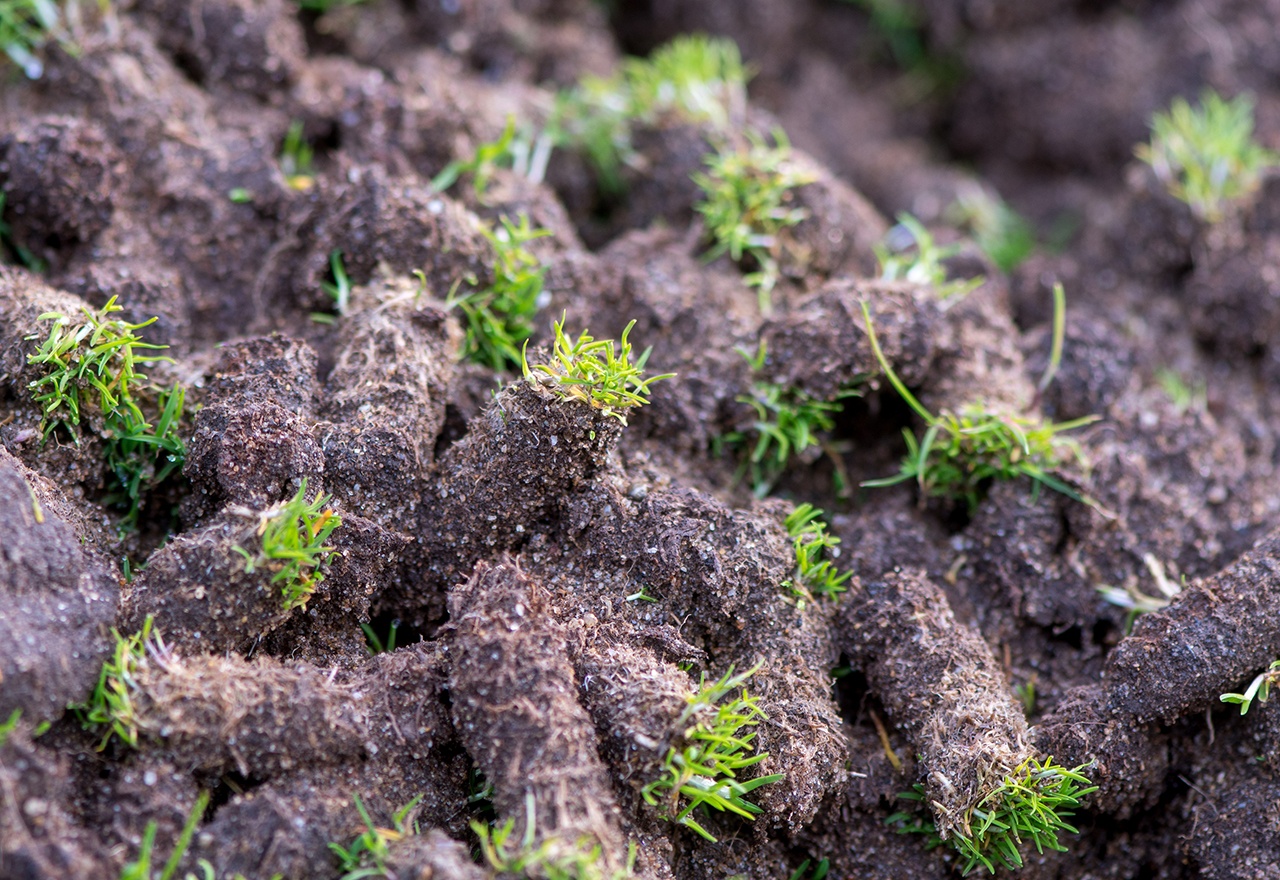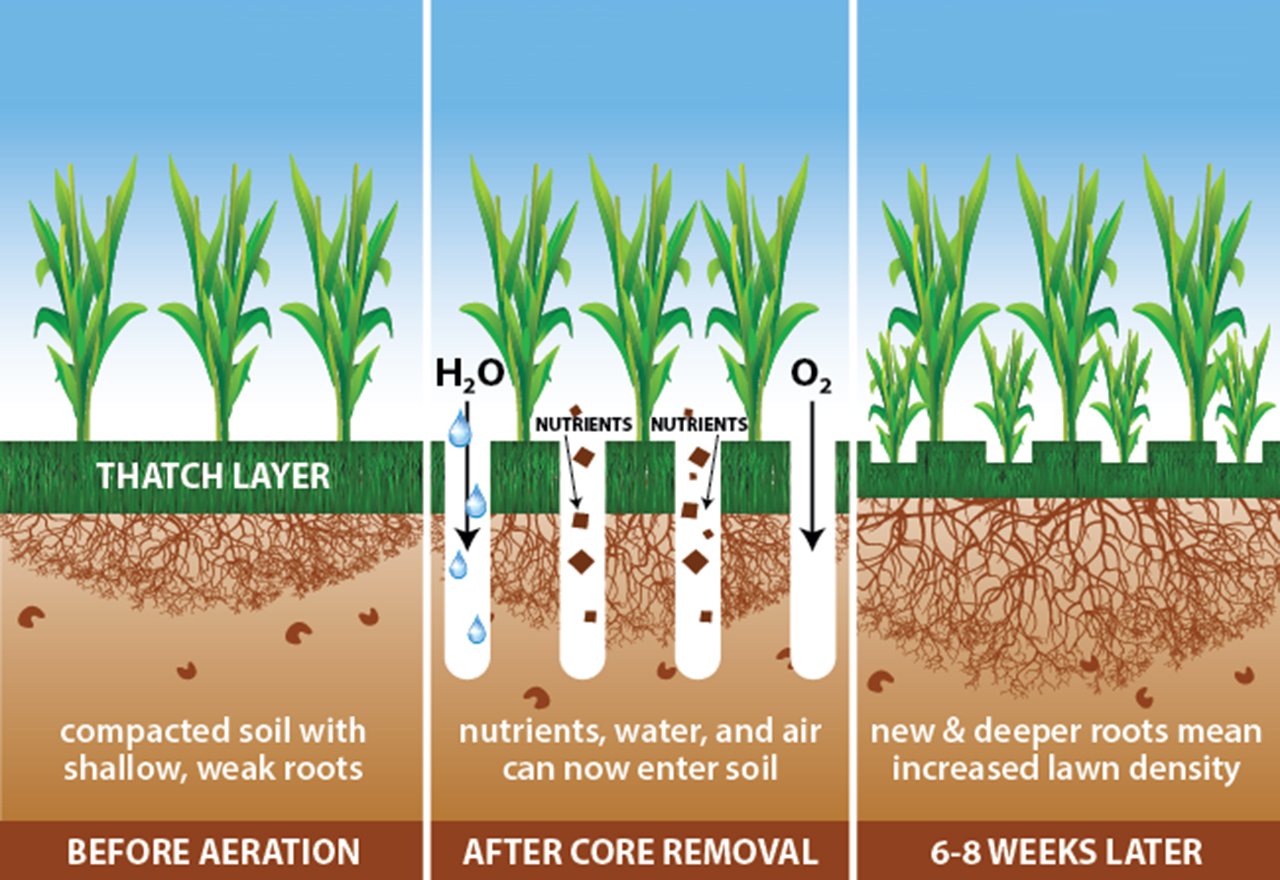
Quick Relief from Compacted Soil and Thatch
Give your lawn a breath of fresh air! Grass roots need oxygen to function and in our heavy clay soils, getting enough oxygen to the roots can sometimes be difficult. With Core Aeration we poke holes into your soil and pull the cores out. Aeration helps lawns with Thatch problems, by loosening up the soil to let nutrients more effectively soak in. It also helps your lawn make the best use of watering because an aerated lawn will retain more water with less runoff.
Aeration temporarily relieves a lawn from the problems associated with Heavy Thatch and Compacted Soil. The poked holes allow air and water to reach the roots. Proper coring also leaves the plugs on the lawn, which is important. Inside the core there are microbes, which will work their way back into the ground, decomposing Thatch as they go. If Thatch is over 1/2 inch thick, we also recommend a Liquid Aeration and Soil Analysis.
Aeration can be beneficial on an annual basis. Ideally, if we can get your soil balanced and improve its biological life, through feeding it organically with our Fertilizers and Compost, Aeration should become less and less necessary. In some cases, we might recommend Liquid Aeration because it can actually loosen the soil more deeply than traditional Core Aeration can. The best time to Aerate is during the cooler weather of Spring or Fall, when the soil is a bit more moist. You do not want to Aerate in the Summer, as the soil is too try.
